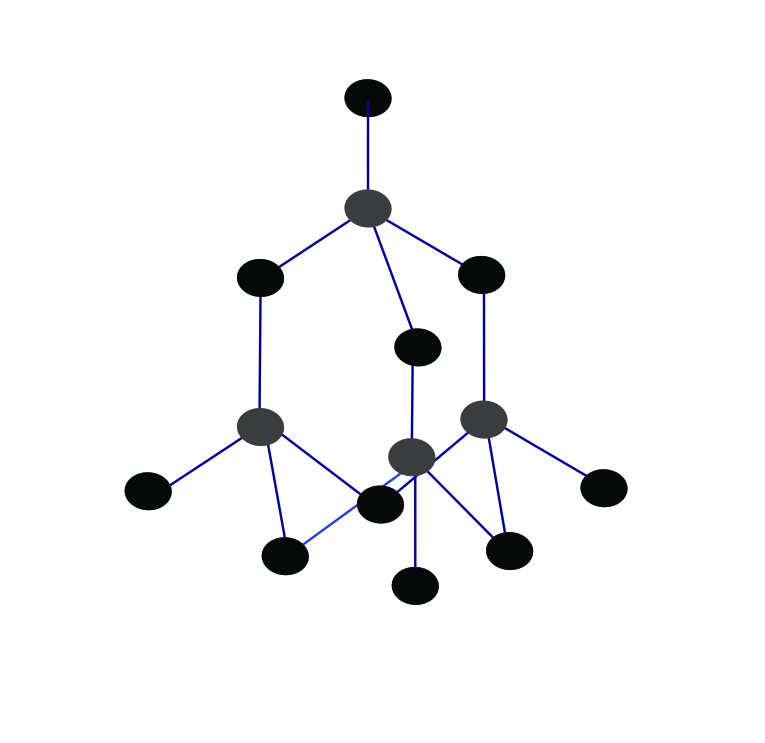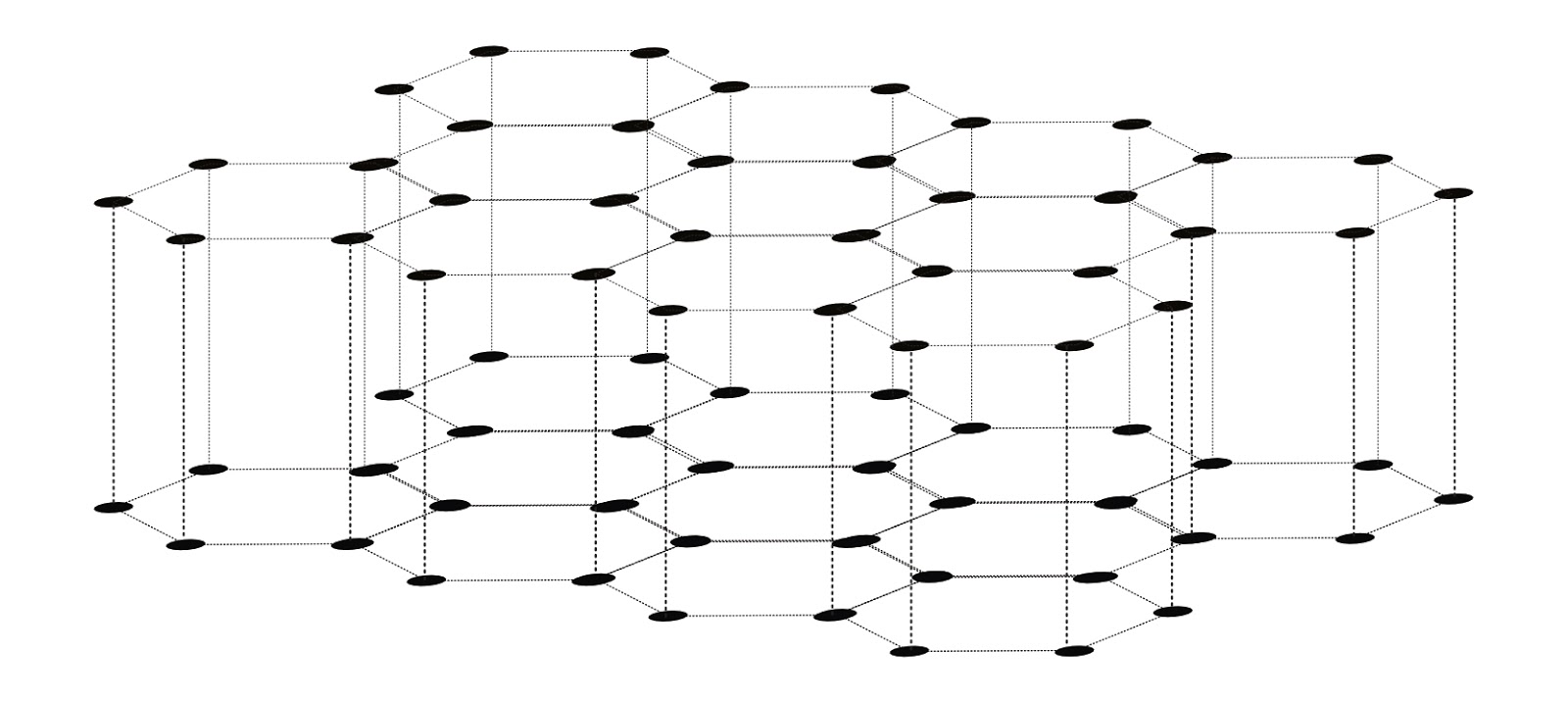Properties of Materials
Organic Chemistry
Organic chemistry is the study of the chemistry of carbon. Unlike most other elements carbon is able to form large complex molecules made mostly of carbon.
Carbon 126C
Protons - 6
Neutrons -6
Electrons - 6 (2,4)
Non-metal
Relative atomic mass: 12.001 (3 isotopes12C,13C,14C)
Carbon has 4 electrons in the outer orbit, therefore, it can form 4 covalent bonds.
Carbon’s ability for form large complex covalent molecules allows it to form groups or families of molecules most of which are either in the form of a long chain like the hydrocarbons or into rings like benzenes.
This ability to form large complex molecules is the basis of the molecules of life, such as proteins, DNA, enzymes, etc. This is why it is called organic chemistry.
Changes of State
Substances can exist in three main physical states, solids, liquids and gases. To change from one state to another a material must gain or lose thermal energy. This thermal energy affects the kinetic energy of the particles in the substance. To change from a solid to a liquid and then to a gas the material must absorb enough energy to increase movement of the molecules and enough energy to break the bonds that hold the particles together.
The amount of energy required to raise the temperature of a material (make the molecules move faster) is known as the_specific heat capacity_ of the material. The energy required to break the bonds and allow it to change state is the latent_ heat capacity_of the material. [more details on these two properties are found in the physics section of this course].
The latent heat capacity of a material is affected by the strength of the individual bonds and the intermolecular forces that hold the particles in the structure.
Covalent bonds, where electrons are shared between atoms in the molecule are generally stronger than those of ionic bonds where there is no physical connection between the atoms, they are held in place by an electrical attraction, not a physical connection. However, the intermolecular forces between covalent molecules are often weak.
Sodium chloride, for example, is a compound with ionic bonds it has has a melting point of 801oC, but graphite and diamonds have large complex covalent bonds and stay solid up to 3825oC, at which point the movement of the atoms is so high it turns directly into a gas rather than a liquid in a process called sublimation.
Allotropes of Carbon
The majority of elements when they are in their elemental form, (pure form, not bonded to other elements to form compounds), only have one physical form with one set of physical properties.
Some elements including carbon and sulfur can have different physical forms, these different forms are known as allotropes.
Carbon has four main allotropes; diamond, graphite, fullerenes and graphene.
Diamonds
Diamond is the hardest natural substance known, it has a very high melting point and does not conduct electricity. The atoms are arranged in a tetrahedral structure with strong bonds and forces between the atoms.
Graphite
Graphite is formed by layers of carbon atoms. The individual layers are very strong, but the bonds between the layers are weaker. This allows the layers to slide over one another. Graphite is used in pencils and other art materials for drawing. As the graphite moves across the surface of the paper individual layers of the graphite are removed and leave the pencil mark.
Unlike diamond, the graphite structure is able to conduct electricity, due to the weak forces holding the electrons in place between each atom.
Graphene
Graphene has the structure of a single layer of graphite, and like graphite, it can conduct electricity. These layers of carbon are very strong and have a high melting point. This is due to the strong bonds between the individual atoms, a common feature of all allotropes of carbon.
Graphene sheets can be formed into tubes, known as nanotubes due to their very small size. These have very high tensile strength and are used in an increasing range of nanotechnologies.
Fullerenes
These are sometimes known as Buckminsterfullerenes or buckyballs. They are a sphere of 60 carbon atoms in a shape that resembles a professional football. The individual spheres are very strong but the forces between individual spheres are weak. This means that they glide over each other very easily but are not distorted easily by forces. Like all allotropes of carbon, they have very high tensile strength and high melting points.
Bulk Properties of Materials
The bulk properties of a material refer to physical properties including:
- Melting points
- Boiling points
- Tensile strength
- Hardness
- Density
These bulk properties are a result of the arrangement of the atoms in the material, the type and strength of the bonds between the atoms that make up the material, as well as the intermolecular forces between the molecules. These are not the same as the individual properties of the atoms and elements that make up the material itself.
Ionic Compounds
These compounds tend to have relatively high melting and boiling points due to the strong intermolecular forces and are therefore normally solid at room temperatures. When molten or in solution they will conduct electricity due to the ionic nature of the structures.
Simple Covalent Molecules
These molecules which include water and carbon dioxide, have weak intermolecular forces and as a result, have lower relative melting and boiling points. These are often liquid or gas at room temperature. They generally do not conduct electricity.
Giant Covalent Structures
These include materials such as diamonds, they have strong bonds and strong intermolecular forces. This gives them high melting and boiling points and is generally strong materials that do not conduct electricity, (graphite and graphene are exceptions to this general rule).
Metals
Metals have high boiling and melting points, with the exception of mercury which is the only metal to be liquid at room temperature. Their strong bonds make them rigid and ductile. The nature of metal bonds means that the electrons are not strongly held to anyone atom allowing electricity to flow easily through metal structures.


